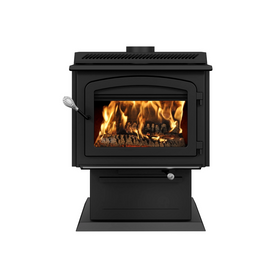
Zero-Carbon Home: What Is It?
Last Updated: Apr 9, 2025Most of us want to do something to reduce our greenhouse gas emissions, the primary contributor to climate change, but may not know where to start. The good news is that people can reduce their greenhouse gas emissions and save money on their utility bills without sacrificing comfort and convenience in their homes. But can we get to zero carbon emissions?
Table of Contents
- What Is a Zero Carbon Home?
- How Much Does it Cost to Build a Zero-Carbon Home?
- Can Existing Homes Be Renovated to Become Zero-Carbon Homes?
- Keys Steps To Convert To A Zero-Carbon Home
- Bottom line
What Is a Zero Carbon Home?
Each year, both residential and commercial buildings account for almost 40% of all energy-related carbon dioxide emissions globally. To play its part, a proactive portion of the building community has called for all new buildings to be net-zero energy. The many definitions of this concept can be confusing - zero energy, net-zero energy, carbon-neutral. They all mean something similar, but with slight differences. When discussing homes, we refer to those built to produce enough renewable energy to offset the energy they consume. Over time, these homes will reduce their net carbon footprint to zero.
The concept of a zero-carbon home might sound like a tiny, off-grid adobe home buried in some obscure part of the woods. While that housing option might appeal to some, zero-carbon dwellings can also be grid-tied, normal-looking homes. Zero-carbon homes are designed with two main functions in mind.

The first goal is similar to that of a passive house. Zero-carbon homes are built to be almost completely airtight and are exceptionally well insulated. Windows are deliberately located on the north and south sides of the home to maximize the home's ability to absorb the sun's heat in the winter and minimize it in the summer. Ground source heat pumps are often incorporated into these homes to utilize the earth's relative temperature to heat and cool the home. All of these design choices work together to achieve maximum energy efficiency.

Second, zero-carbon homes ideally have no natural gas lines; all energy consumption is purely electric. This is key because electricity generation is becoming cleaner and cleaner. While efficient for heating (and cleaner than coal), natural gas is still a fossil fuel. Burning it in your own home emits greenhouse gas emissions. Also, cooking and heating with natural gas emits other contaminants such as nitrogen oxides (NOx), carbon monoxide (CO), volatile organic compounds (VOCs), trace amounts of sulfur dioxide (SO2), and particulate matter (PM)—all of which are unhealthy to breathe in.

Once the home reduces its need for energy, renewable electricity is generated with solar panel systems, home-scale wind turbines, or other renewable energy sources. The renewable energy system needs to be sized appropriately to produce enough electricity to offset total annual energy consumption - that's where the term "net" comes in. For example, solar panels will produce more electricity on bright, sunny days, but nothing at night. So, the home needs to produce more renewable energy than consumed during the day to offset needs at night when electricity is pulled from the grid. A zero-carbon home could also purchase a battery storage unit, like the Tesla Powerwall, to use stored power at night and reduce or eliminate reliance on the grid. So, a zero-carbon home's goal is to be carbon neutral. It produces just as much energy as it uses.
There is some debate over whether a home's carbon footprint should include transportation. A house's location plays a significant role in carbon emissions from driving to and from work, school, etc. Homeowners with electric cars should size renewable energy systems to produce enough electricity to charge their electric vehicles to become a genuine zero-carbon home.
Is it possible to have a carbon-neutral home without installing renewable energy systems? Yes, depending on how you look at it. To offset electricity from a grid that relies on fossil fuels, you would need to purchase enough renewable energy to offset your consumption. This can be achieved either through purchasing renewable energy credits on the market or through your utility if it offers a program to buy all wind or solar power from the grid.

How Much Does it Cost to Build a Zero-Carbon Home?
Zero-carbon homes typically cost between 5%-15% more than a similar-sized regular home, depending on investments and available incentives. So, if a newly constructed home costs $300,000, a carbon-neutral home may cost $330,000, assuming 10% incremental costs. The increase in mortgage payments for the additional $30,000 is about $150 per month. Balance against energy savings: the US Department of Energy reports that the average family spends about $2,200 each year on energy bills, which is about $180 per month. That translates into a monthly savings of $30, making the investments pay for themselves from day one.
Keys Steps To Convert To A Zero-Carbon Home
Complete an Energy Audit
Hire a certified energy advisor to conduct an energy audit of your home. This will help you find ways to drastically cut back on the amount of energy your home needs. It will also provide suggestions on simple fixes that can be achieved with a small budget. The energy auditor may even have recommendations for a contractor who has experience in carbon-neutral construction.
Research Incentives
There are several government incentives for people planning to build a new zero-carbon home or retrofit an existing home to move towards the zero-carbon ideal. Check with your local utility and city, state, and federal government to find rebates or tax credits to reduce the total upfront incremental cost.
Tobias Roberts
Tobias runs an agroecology farm and a natural building collective in the mountains of El Salvador. He specializes in earthen construction methods and uses permaculture design methods to integrate structures into the sustainability of the landscape.














